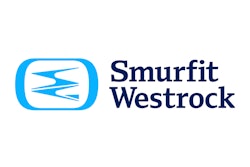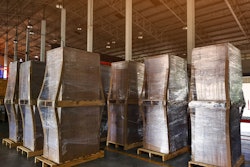Welcome to Sustainable Packaging Explained — your guide to sustainable materials, methods, and package design, produced by the Emerging Brands Alliance in conjunction with Packaging World.
Today, we are focusing on the potential of glass as a packaging material. Glass is made from the fusion of Silica sand, soda ash, and limestone, forming a substance that is conveniently recyclable. Recycled glass, or “cullet,” is also often added, further reducing the environmental footprint. Cullet first requires processing to color separate and remove non-glass contaminants such as labels and caps.
Glass goes through a three-step manufacturing process before it reaches consumers. Step one is the Batch House, where raw glass material is housed in large silos. Step two is Glass Furnace Operations, where the mix is fed continuously into a furnace and melted, and step three of Forming, where the final shape of the container is formed.
Glass has enjoyed a long history as a packaging choice. It boasts qualities such as being inert and impermeable, ensuring that the contents remain unaltered by external influences. This characteristic makes glass particularly suitable for products that are sensitive to light, heat, or oxygen.
In its unaltered state, glass is recyclable, and a solid choice for reuse and refill options. It can be recycled endlessly without losing its integrity, and according to the Glass Packaging Institute, 80% of glass that is recovered is made into new glass products. However, it's worth noting that glass can be energy-intensive to produce, which is a factor to consider in its overall sustainability.
Glass is great in that it’s recyclable and has a beautiful, classic aesthetic. When its clear, the product is easy to see, or its when tinted—brown for beer bottles, for instance—it can impeded UV light that could impact the product itself. But it has a drawback in its weight—CO2 footprint has to be a consideration for any volume of glass. Also, it’s shatter-prone nature isn’t an ideal match for certain wet, slippery personal care product environments, like a shower or bathroom. There are shatterproof glasses, but that feature adds cost. Among its current perch with beverages and spirits, I think a potential new Goldilocks zone for glass packaging could be in aesthetically beautiful, durable spray bottles or dispensers that are refilled by concentrated product in lighter packaging, like flexible packaging in reuse/refill models. These programs are reminiscent of the milkman model from 70 years ago, which ironically relied on glass bottles.
The glass packaging industry continues to strengthen glass through new surface treatments and improved designs, without sacrificing improvements made by lightweighting. Since 1985, ketchup bottles have reduced weight 32%, and 7 oz. beer bottles have been reduced 30%, often by removing excess glass from the neck and parts of the bottle where thickness is not critical.
Other innovations such as airless delivery systems avoid an internal plastic container to dispense product, making the primary packaging lighter, with a smaller environmental footprint.
One interesting glass reuse model that popped up recently is a partnership between Carnival Cruises, Bacardi, and reusable packaging company ecoSPIRITS. You can imagine a carribean cruise ship goes through a lot of rum drinks, and historically, a lot of single-use 0.75 or 1.75 L handle bottles of Bacardi Rum. In this pilot on a handful of ships, those single-use glass bottles are replaced by what amounts to about a 4-Liter watercooler of Bacardi that’s kept behind the bar and dispensed by a bartender, drink by drink. Each water-cooler sizes reusable carafe will replace about four bottles of BACARDĺ® Superior rum and can be reused, cleaned, and refilled approximately 100 times, creating a closed-loop system. During this trial phase, approximately 9,400 bottles will be replaced with ecoSPIRITS containers, significantly reducing waste.
Glass packaging offers recyclability, inertness, and sustainability. However, as with any packaging material, it is imperative to conduct a comprehensive life-cycle analysis to determine whether glass is the optimal choice for your unique circumstances.
Thanks for watching and be sure to subscribe to our YouTube channel for more videos on packaging and scaling operations. And join us at the Emerging Brands Alliance for year-round resources to grow your brand.


























